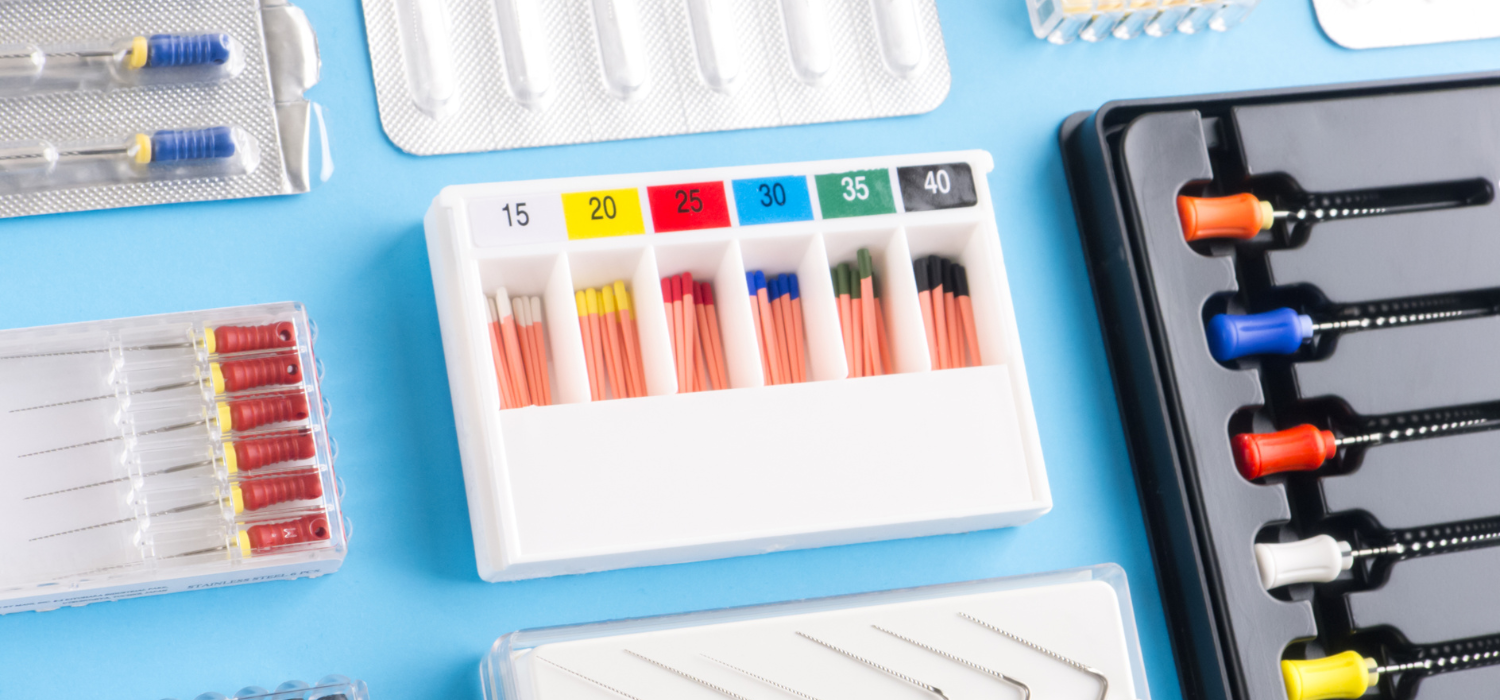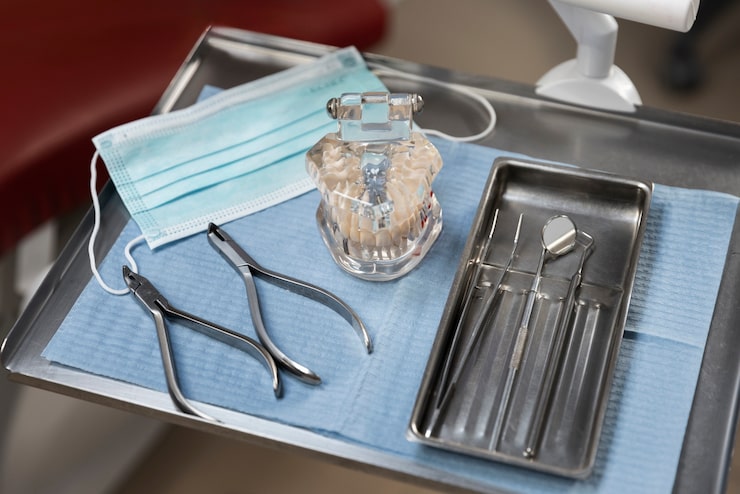
It can be confusing sometimes because there are so many professionals in the field of dentistry. Every specialist knows a particular area that goes beyond providing general dentistry services. Thus, if you require personal dental care for a specific issue, you can find yourself contrasting prosthodontists with endodontists; knowing the differences between these professionals’ specialities will help you identify when you might require one over the other. Here at Innovative Dentistry, we’ve taken the time to compare these two dental essentials.
Endodontics
What is It?
Endodontics is a speciality of dentistry that focuses on diagnosing, predicting, and treating diseases that affect the surrounding tissues and the dental pulp. Brain tissue, veins, and connective tissue are all present in the dental kit which is located in the tooth’s core. If the mash becomes contaminated or irritated due to deep deterioration, trauma, or other factors, it can cause severe pain and endanger the tooth’s health. Endodontists are experts at preserving common teeth using pulpotomy, apicoectomy, and root canal therapy techniques.
Important Endodontic Techniques
- Root Canal Therapy:
In endodontics, root canal therapy may be vital for preserving a tooth with a contaminated or burned dental mash. To prevent further illness, the endodontist uses a procedure that involves removing any contaminated or damaged mash, cleaning and shaping the root canals, and filling them with a biocompatible material. This preparation successfully eliminates the cause of the pain and restores the tooth’s function and sensitivity.
- Apicoectomy:
When root canal therapy fails or isn’t practical, an apicoectomy may be involved in the surgical path of action. It involves sealing the crown to prevent reinfection and extracting the tip of the tooth’s root and any contaminated tissue. When infection continues after standard root canal therapy or when an anatomical abnormality makes root canal therapy unlikely to be effective, apicoectomy is commonly recommended.
- Pulpotomy:
When the disease has not progressed, pulpotomy may be a preservationist therapy option, particularly in vital teeth. It involves partially removing the dental mash, usually the affected coronal portion, to reduce pain and safeguard the remaining solid tissue. Paediatric dentists frequently use pulpotomy to maintain baby teeth until they break and give way to permanent teeth.
Prosthodontics
What Is It?
Prosthodontics, which focuses on replacing lost teeth and creating innovative designs to advance both functionality and look, is another speciality of dental cleaning kits. The planning, making, and fitting of dental prostheses customised to each patient’s unique needs is the specialisation of prosthodontists.
Important Prosthodontics Techniques
- Dental Implants:
Dental embeds work like fake tooth roots by carefully inserting titanium posts into the jawbone. They restore functionality and appearance by providing a solid base for false teeth. Dental implants are better than other tooth replacement options because they are more stable, last longer, and protect the surrounding teeth and bone.
- Bridges and Crowns:
Common prosthetic devices used to restore damaged or lost teeth are crowns and bridges. Crowns, sometimes called caps, are specialised coverings that encapsulate a tooth to restore its look, quality, estimate, and form. Tooth rotting, fractures, or large fillings are common reasons for their recommendation. Conversely, bridges replace one or more missing teeth by bonding prosthetics (duplicate teeth) to nearby natural teeth or implants. To restore dental function and aesthetics, crowns and bridges are essential for improving speech clarity, chewing ability, and smile look.
How to Determine If You Need to See a Prosthodontist or Endodontist
Depending on your dental problem, you may need to consult a prosthodontist or endodontist. Most dental problems have unique symptoms, and your side effects may help you determine which specialist you should see. To help you decide which expert to see, consider the following typical guidelines:
Endodontist
It could be time to visit an endodontist if you’re experiencing any of the following symptoms.
- Unknown or persistent toothache
- Temperature sensitivity to extremes lasting longer than usual
- Bumps, soreness, or swelling in the area surrounding the affected teeth
- Teeth destruction
- Excruciating pain when eating food
Prosthodontist
Should you have noticed any of the following symptoms, it could be time to see a prosthodontist:
- Cavity or excessive wear on your teeth
- Missing, fractured, chipped, or discoloured teeth
- Difficulty speaking and chewing
- A jaw or face pain
- Teeth that stick
- Misaligned chomp, or malocclusion
- Uncomfortable bridges or dentures that slide around in your mouth or don’t fit right
- A refusal to enjoy favourite foods out of dental discomfort or embarrassment.
Distinguishing Factors
Endodontics and prosthodontics differ in a few ways
The focus of Treatment
In order to protect regular teeth as much as possible, endodontics primarily focuses on diagnosing and treating problems affecting the tooth mash and root waterway design. On the other hand, prosthodontics uses prosthetic devices to advance the feel and capacity of replacing and restoring lost teeth and complete smiles.
Preservation versus Replacement
The main goal of endodontic medications is to preserve healthy teeth by removing damaged or defective tooth structures and cleansing the root canal system. Prosthodontic medications replace lost teeth with artificial options such as dental implants, crowns, scaffolds, or dentures to restore oral function and feel.
Specialized Training
Endodontists undergo further specialised training after graduation from dental school to properly assess and treat contaminations that affect the tooth pulp and root canal architecture. They are skilled in treating root tunnels, apicoectomies, and other endodontic medications. Alternatively, prosthodontists receive specialised training in designing, fabricating, and fitting dental prostheses tailored to meet each patient’s unique needs. They are experts at replacing and restoring lost teeth and encompassing designs using the most up-to-date prosthetic devices and techniques.
The Bottom Line
Endodontics and Prosthodontics are two essential fields in dentistry that each play a unique yet complementary role in maintaining and restoring oral health. While endodontics diagnoses and treatments contaminations affecting the tooth mash and root channel engineering, prosthodontics focuses on replacing missing teeth and covering designs with prosthetic devices. Patients can make well-informed decisions about their dental kit set and care by understanding the differences between these strengths and their fundamental techniques. On the other hand, dental professionals can work well together to provide comprehensive treatment plans that are customised to each patient’s needs. Prosthodontics and endodontics eventually commit themselves fully to optimal oral health and success.




